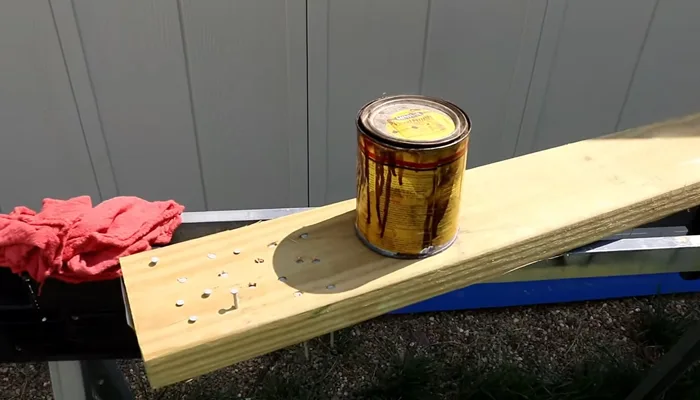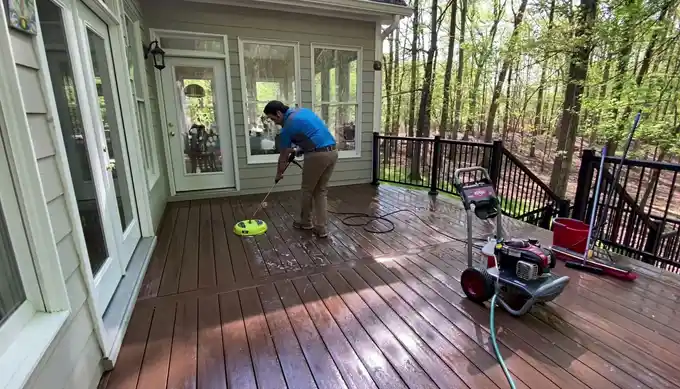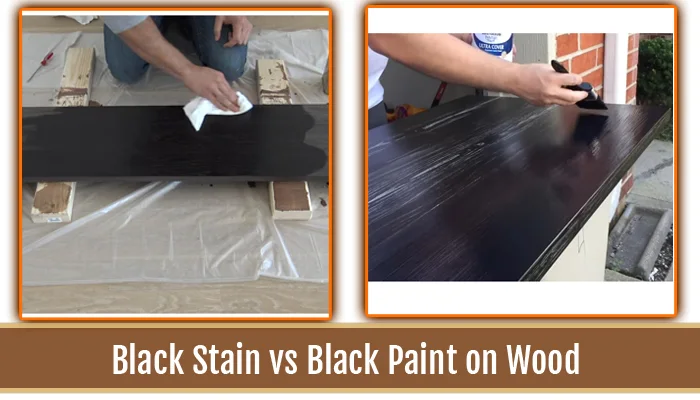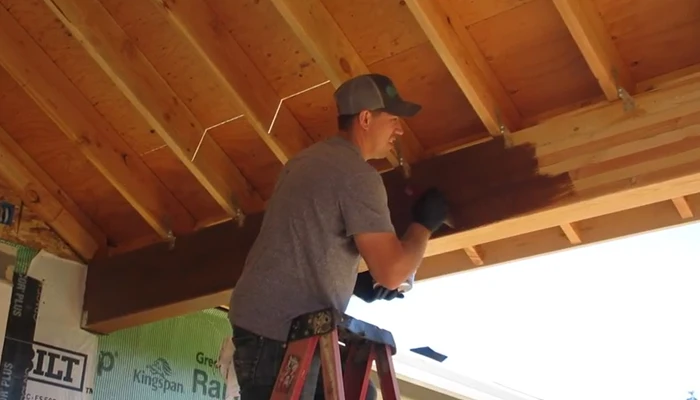WoodenuKnow.com is a participant in the Amazon Services LLC Associates Program, an affiliate advertising program designed to provide a means for sites to earn advertising fees by advertising and linking to Amazon.com and may earn from qualifying purchases.
When you complete your woodworking project and apply the final layer of polyurethane stain, you will most likely have some leftover stain in the can. You may not wish to apply it to another project, or perhaps the leftover polyurethane stain can go bad before it can be used again.
Whatever the reason, you need to know how to dispose of polyurethane stains correctly. You cannot simply dispose of it in the trash or down the drain. Polyurethane stain is considered a hazardous waste material and must be disposed of properly.
Besides polluting the environment, it can adversely affect people and animals. There are several ways in which polyurethane stain can be disposed of, and we will discuss each in turn.
Polyurethane Stains: Various Ways to Dispose of Them
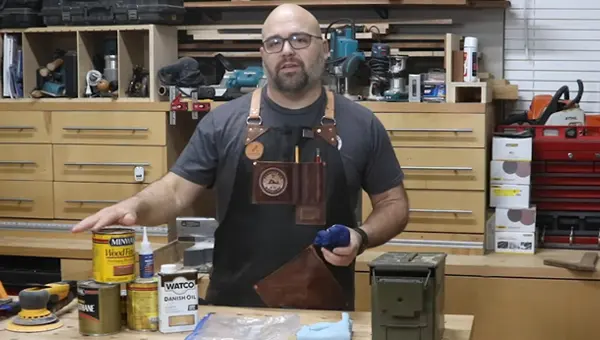
Knowing the different ways of disposing of polyurethane stain will help you decide on the most suitable method for your needs. It is essential to follow the disposal methods to the letter to prevent accidents or health hazards.
Taking these steps will also enable you to avoid any legal penalties that may be imposed for incorrect disposal. The following are some standard methods that you may find helpful for disposing of leftover polyurethane stains.
1. Contact the Local Waste Management Department
This is the first step in adequately disposing of polyurethane stain. The waste management department in your area will have all the information you need on the proper disposal of hazardous materials. They can advise you on the nearest disposal facility and provide you with any other instructions that may be necessary.
You can also find out if any special regulations in your area need to be followed. Contact information for the waste management department is usually available on the city’s or county’s website. Once you have the contact information, you can give them a call or visit their office in person.
2. Take It to a Hazardous Waste Facility
For larger amounts of leftover polyurethane stain, the best option is to take it to a household hazardous waste collection facility.
The hazardous waste facility is specially equipped to dispose of polyurethane wood stains safely and effectively. These stains contain harmful chemicals that can leach into the soil and contaminate groundwater if not disposed of properly.
Spontaneous combustion at the hazardous waste facility burns polyurethane wood stains at high temperatures, breaking down the harmful chemicals into harmless gasses. This ensures that the polyurethane wood stains are disposed of safely and won’t threaten the environment.
3. Dispose of it Yourself
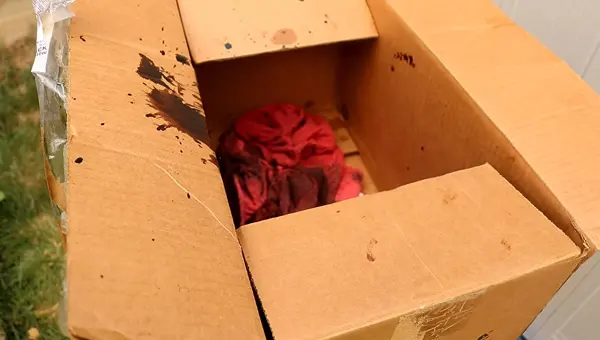
You can dispose of polyurethane wood stain yourself if you do not have a large quantity or cannot reach a hazardous waste facility in your area. To begin with, you must solidify the polyurethane wood stain.
Several options are available for accomplishing this, and the method you choose will depend on the amount of stain you have or what materials you have on hand. Polyurethane wood stains can be solidified using the following methods:
- Mixing With Kitty Litter:
Mixing cat litter with polyurethane stain will harden the stain and make it easier to dispose of. Sodium bentonite contained in kitty litter acts as an absorbent, allowing liquid polyurethane to be absorbed and converted to solid.
Depending on the quantity of polyurethane wood stain you have, you will need to adjust the ratio of kitty litter to stain. The general rule of thumb is that a 1:1 ratio is adequate.
You need to ensure that the kitty litter or sand is thoroughly mixed in and that there are no clumps. Once the mixture is uniform, wait for it to harden before disposing it in the garbage. Upon hardening, it can be thrown away along with the rest of the regular trash.
- Mixing With Sawdust or Sand:
If you have sawdust or sand on hand, you can use it to solidify polyurethane wood stains. Simply add the sawdust or sand to the stain and mix it well. Sawdust or sand will absorb the stain and assist in the hardening process.
The amount of sawdust or sand used will determine how long it takes for the mixture to harden. You can use a 1:1 ratio as a starting point and add more if needed.
Once the stain has hardened, it is disposed of in the same manner as other solid waste. This method is a quick and easy way to ensure that the polyurethane stain is appropriately disposed of.
- Use Newspaper:
Newspapers can be used to help solidify polyurethane stains for disposal. If you place a few layers of paper in the polyurethane can, it will help absorb any extra moisture and make it easier for the stain to harden.
You can also help to speed up the process by using a fan to circulate air around the area. Once the polyurethane has hardened, it will be much easier to dispose of without harming the environment.
This method takes a little longer than the others, but it is still an effective method for hardening polyurethane wood stains. Please note that this method works best with small amounts of polyurethane wood stain. In any other case, the newspaper will take a very long time to absorb all the liquid.
- Use Commercial Polyurethane Stain Hardener:
Commercial polyurethane varnish hardeners contain a hardening agent that assists in solidifying the polyurethane stain. This is a good option for disposing of large quantities of polyurethane wood stain.
Simply mix the hardener with the stain according to the directions on the package. Once the mixture has hardened, just throw it away in the garbage. Several factors should be considered when choosing a commercial hardener.
Make sure that the product is compatible with the type of polyurethane stain you are using. You also need to consider the amount of time it takes for the mixture to harden.
Some products harden quickly, while others take a few hours. It is often best to choose a product that hardens quickly to dispose of polyurethane stains properly.
- Normal Air Drying:
If you do not have any other materials available, you can allow the polyurethane wood stain to air dry. This method will take the longest time, and its success will depend on the climate.
The stain will take longer to harden if you live in a humid area. In drier climates, the stain will harden faster. When disposing of a large quantity of polyurethane wood stain, it is not recommended to allow the stain to air dry.
Simply open the container and allow it to sit undisturbed in a well-ventilated space. As soon as the polyurethane has hardened, dispose of it in the same manner as other household waste.
4. Give It Away
If you do not need the usable polyurethane wood stain, you can give it away to someone who can use it in public works. Many people enjoy refinishing furniture and other items with polyurethane wood stains.
You can check with family, friends, and neighbors to see if anyone is interested in taking your leftover paint or stain. There are also several online forums where people post about their need for specific materials.
Someone may be willing to take your polyurethane wood stain off your hands. This is a great way to get rid of the polyurethane wood stain and help someone else at the same time.
5. Recycling
When it comes to the disposal of polyurethane stains, recycling is always the best option. There are several ways to recycle polyurethane wood stains. The easiest way is to take it to a local recycling center that accepts paint and other hazardous materials.
This option is not available in all areas, so you may need to check with your local government to see if there is a recycling center near you.
You can also contact the company that manufactured the polyurethane wood stain to see if they have a recycling program. Many companies are willing to recycle their products so they can be used again.
Safety Precautions When Disposing of Polyurethane Stain
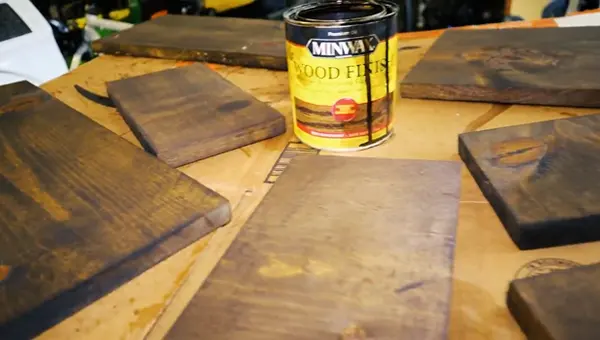
When disposing of polyurethane wood stain, there are several safety precautions to take, especially if you are doing it yourself. To avoid inhaling fumes from the stain, ensure that the area is well ventilated. Wearing gloves that are impervious to stains is also important.
This will protect your hands from coming into contact with the stain. It is recommended that you wear a mask to avoid inhaling the fumes. To prevent fumes from entering your eyes, it is also recommended that you wear protective eyeglasses.
Use a drop cloth when solidifying the stain to avoid making a mess. Ensure the solidified stain is properly disposed of in a trash bag. Do not pour the solidified stain down the drain as it can clog the pipes.
Following these simple tips, you can safely dispose of your polyurethane wood stain. By taking the time to dispose of the stain properly, you will be helping to protect the environment and keeping yourself safe.
Frequently Asked Questions:
There are a few frequently asked questions regarding polyurethane wood stain disposal. Below are some of the most commonly asked questions with answers.
1. What to do if you get a polyurethane stain on your skin?
Mineral spirits or paint thinner can be used to remove polyurethane stains from the skin. First, saturate a cotton ball or rags with mineral spirits and apply it to the stained area. Gently rub the cotton ball or soaked rags over the stain using circular motions. Continue rubbing until the stain is gone.
If necessary, you can also use a soft-bristled brush to help remove the stain. After removing the stain, wash the area with soap and water to remove the mineral spirits.
2. What happens if liquid polyurethane is disposed of in the sink?
Pouring liquid polyurethane down the sink can lead to clogging and other problems. The polyurethane will harden and create a blockage in the pipes, which can lead to backups and overflows.
Polyurethane can also leach chemicals into the water supply, which can be harmful to humans. In this respect, it is extremely important to dispose of liquid polyurethane properly.
3. How do you remove polyurethane stains from wood?
Vinegar is a common household item used to dissolve polyurethane stains from wood. Although vinegar is acidic, it is safe to use on most types of wood. It has a 2.4 pH level that will easily remove polyurethane stains.
To remove a polyurethane stain, apply vinegar to a clean cloth and rub it into the stain. Let the vinegar sit for a few minutes, then wipe it away with a damp cloth. You may need to repeat this process several times to remove all the stains.
4. How do I get polyurethane stains out of clothes?
You can remove polyurethane stains from clothing in several ways, depending on the stain’s severity and the garment’s fabric. For lightly stained garments, you can try spot cleaning with a mild detergent or soaking the garment in vinegar. If the stain is more stubborn, you may need to use a citrus-based cleaner or paint remover.
It is essential to test any cleaner on an inconspicuous area of the fabric before using it on the stain, as some cleaners can negatively affect delicate fabrics. Once the stain is gone, wash the garment with soap and water to remove any residual cleaner.
Conclusion
Now that you know how to dispose of polyurethane stains, we hope you can use them safely. According to your available resources, you may use any of the methods we have discussed.
Just remember to be careful to avoid inhaling fumes and getting the stain on your skin. You have also learned that if accidentally the liquid polyurethane gets on your skin, you should not be concerned since it can be removed using mineral spirits.
If you have a large quantity of polyurethane to dispose of, you should consider contacting your local waste disposal company instead of dealing with it yourself.

